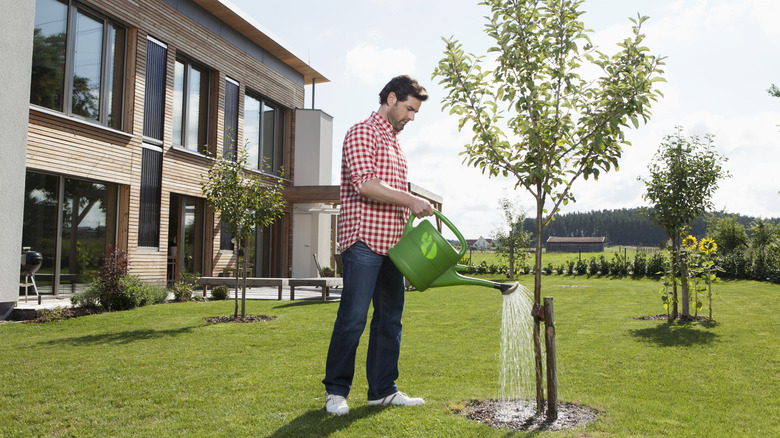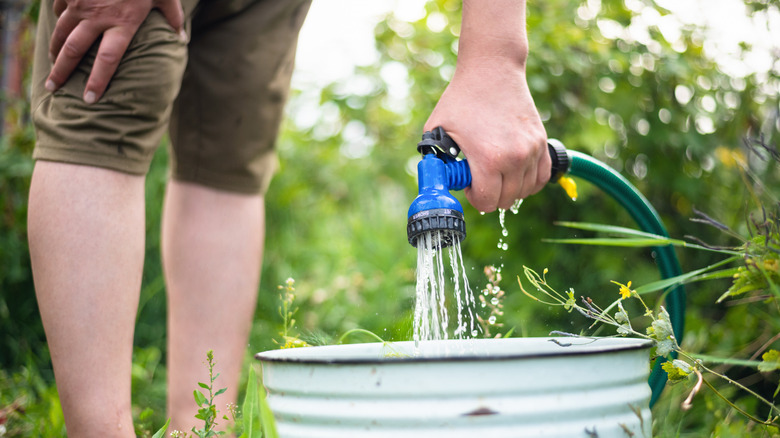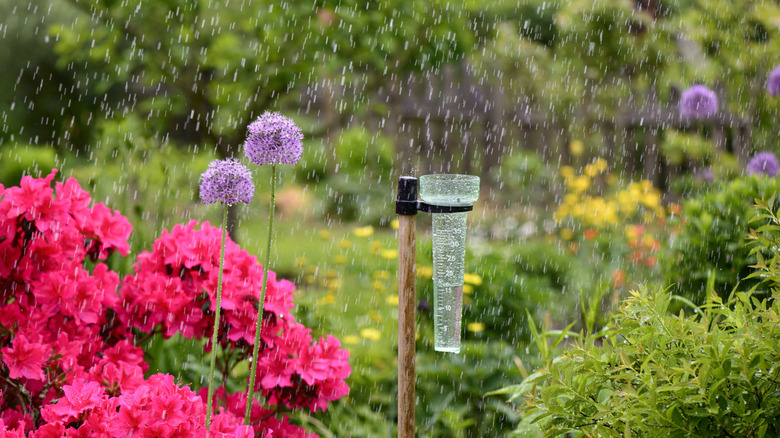Essential Measurements For Watering Plants Deeply
While some plants need to be watered constantly, most do better when they're watered deeply but infrequently. But how deep is deep enough? How do you know when you've watered the plant sufficiently long to reach that depth? To answer the first question: It depends on what you're growing. That said, generally, what gardeners mean when they say "to water deeply" is to saturate the entire depth and width of the root zone.
The roots of smaller plants are generally found in the top 6 to 18 inches of the growing medium and will usually spread out beyond the above-ground width of the plant. So, when watering, be sure to cover a reasonably large area around the plant's base. Tree roots can grow several feet deep, but most of the smaller, water-drinking roots will stay in the top 6 to 24 inches. They can spread out about two to four times the width of the tree crown. Larger plants and shrubs keep the majority of roots in the top 12 to 18 inches and can spread to three-and-a-half times the plant width. So, water deeply across the entire area that could contain roots to avoid leaving large sections of its root system parched.
Now that you know how to calculate where and how deep you need to water, how do you figure out when you've watered enough? First, do some math to estimate how much water is needed ahead of time. Then, use the right techniques and devices to precisely measure the amount of water it takes to irrigate as deeply as you need to.
Tips for estimating how much water you need to give
Two of the biggest mistakes to avoid when watering your garden are watering too much and too little. To ensure you don't over- or underwater the plants, start by establishing the depth and width of their root zone based on the estimates mentioned earlier. Once you have that number, try the techniques below to estimate about how much water to apply to reach the required depth.
If you have a sprinkler system, set out a few flat-bottomed containers, like buckets or pots, in the yard. Turn on your sprinklers and time how long it takes for those containers to fill with one inch of water. Then wait two hours before digging into the soil until it starts to feel dry. Measure how many inches of the medium feel moist. If you're watering with a hose, set a flat container out and water with the hose settings you'd use to water your plant, but point it at the container. Time how long it takes for the container to fill with an inch of water. Then, irrigate your plant for the same length of time and come back in two hours to dig.
If, say, the top 6 inches of soil feel moist after that two-hour wait, you know 1 inch of water will saturate 6 inches of soil — and you now know how long it takes to apply that much water. In this case, if you need to water to a depth of 18 inches, you'd apply 3 inches of water. This test will also tell you if a plant is parched or suffering too much water. Since the symptoms of these two conditions are similar, digging down to check the moisture will confirm which problem is affecting your plant.
Tools for measuring soil moisture and rainfall
One of the best tools for watering your plants is a moisture sensor. These can go 1 to 4 feet below the surface, but they typically only measure the moisture in a small nearby area. So, they're more practical for smaller plants whose roots don't spread out very wide. For trees and shrubs, just use the digging method discussed earlier the first time you water.
To accurately adjust your watering based on rainfall, use rain gauges. A classic rain gauge looks like a small tube with measurements on the side. These instruments collect water when it rains so you can easily see how many inches of precipitation fell in your yard — and how much more water the plants need.
For example, if your plant needs 3 inches of water every two weeks and you got 2 inches of rainfall during that two-week period, you only need to apply an inch of water. Depending on your yard topography, you may want to set out a few rain gauges in different areas. If you have a flower bed under a tree, for example, you'd want a separate rain gauge there to see how much rainfall that bed gets despite being shielded by the canopy.


